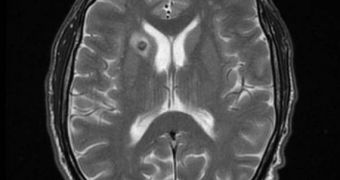According to the results of a new scientific study, published in the latest issue of the scientific journal Proceedings of the National Academy of Sciences (PNAS), each human brain “sings” on a different frequency, somewhere in the 40-to-70 hertz (Hz) range. The tune is determined by the oscillation speed of gamma waves, which are produced inside the cortex whenever a person is, for example, watching an image. The most important determining factor of this speed is the essential neuroinhibitor GABA, or gamma-aminobutyric acid. A team of experts from the Cardiff University Brain Research Imaging Centre (CUBRIC) has learned that the more GABA there is in the brain, the higher the oscillation frequency.
“In effect, each person's brain 'sings' at a different note in the range 40-70 Hz. This is similar to the notes in the lowest octaves of a standard piano keyboard or the lower notes on a bass guitar. Importantly, we also found that this frequency appears to be controlled by how much of an essential neurotransmitter, GABA, is present in a person's visual cortex,” the leader of the new research, CU School of Psychology Professor Krish Singh, explained.
“Using sophisticated MEG and MRI brain imaging equipment, we've found that when a person looks at a visual pattern, their brain produces an electrical signal, known as a gamma oscillation, at a set frequency,” he added. In the normal brain, GABA is a key chemical, as it ensures that all the cortices function within normal parameters. Any distortion in its usual levels can have important consequences, including the development of an array of mental health problems, such as epilepsy and schizophrenia.
“As a result of our research, we are already looking to share this work with our medical colleagues. In particular, we hope that the study of gamma oscillation frequency will provide a new window into the action of neurotransmitters such as GABA and how their function is compromised in diseases such as epilepsy and schizophrenia,” Singh further explained, as quoted by ScienceDaily. “We also believe that our findings could have important implications for the development, production and effectiveness of drugs to treat these and other neurological conditions.”
GABA concentrations were found to have the most significant effect in the visual processing areas of the brain, when test participants were asked to watch a series of images on a screen. Each of the pictures created a certain oscillation speed of the gamma waves, which was directly correlated with the GABA concentrations present in the relevant cortex.

 14 DAY TRIAL //
14 DAY TRIAL //